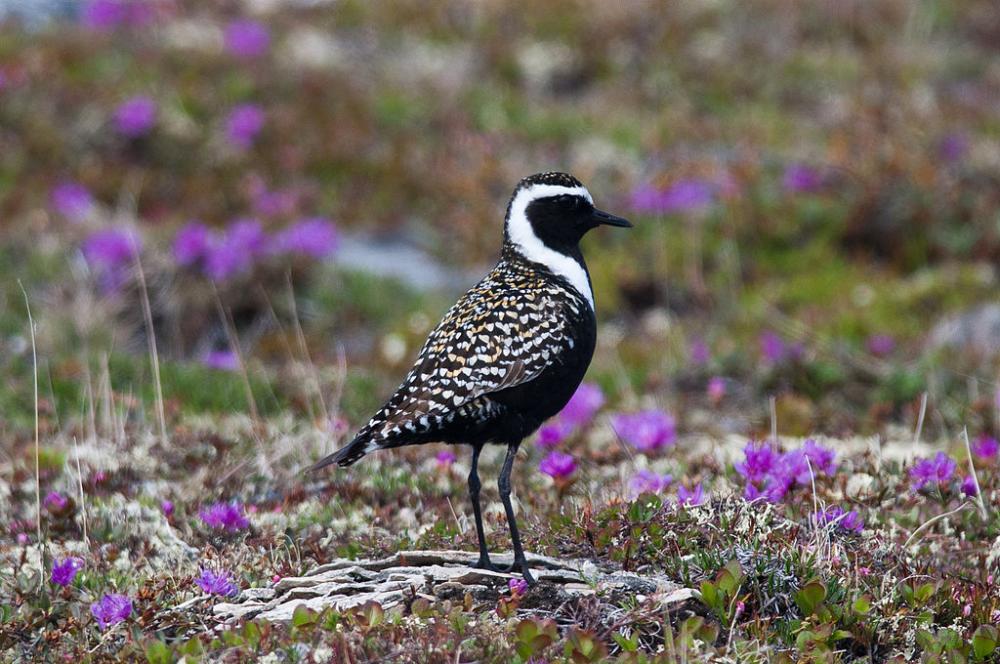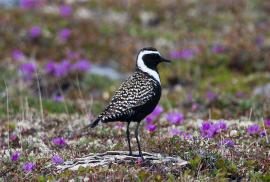Guide to Boreal Birds
Overview
The American Golden-Plover annually performs one of the longest migrations of any American bird. In late summer birds from the eastern Arctic gather in eastern Canada, where they fatten on insects, crowberries and other small fruits before beginning their nonstop flight over the ocean to the northern coast of South America, a journey of some 2,500 miles (4,000 kilometers). Smaller numbers move southward in the fall across the Great Plains. Relatively few American Golden-Plovers are found along the East Coast of the United States. Once in South America they make another long flight across the vast Amazon Basin, finally arriving at their principal wintering grounds on the pampas of central Argentina and in Patagonia and Tierra del Fuego. In former times they gathered there in enormous numbers, but heavy shooting in both North and South America took a serious toll, from which the species has not fully recovered. In spring the birds return to the Arctic but at that time they move north by way of the Great Plains.
Description
9-11" (23-28 cm). A quail-sized plover. In breeding plumage, dull golden-brown above, with black throat, breast, flanks, belly, and undertail coverts; bold white stripe runs from forehead, over eye, and down side of neck and breast. In winter, has bold whitish eyebrow, grayish-white underparts. Lacks white wing stripe, white rump, and black patch under wing of larger and paler Black-bellied Plover. See Pacific Golden-Plover.
Voice
A mellow quee-lee-la.
Nesting
3 or 4 buff eggs, spotted with brown, in a shallow depression lined with reindeer moss, usually on a ridge or other elevated spot in the tundra.
Habitat
Breeds on tundra; during migration found on coastal beaches and mudflats and inland on prairies and plowed fields.
Range/Migration
Breeds from Alaska east to Baffin Island. In migration, most birds travel south over Atlantic Ocean from Canadian Maritimes to South America and return northward in spring over Great Plains, but some winter on islands in Pacific and appear along West Coast during migration.



